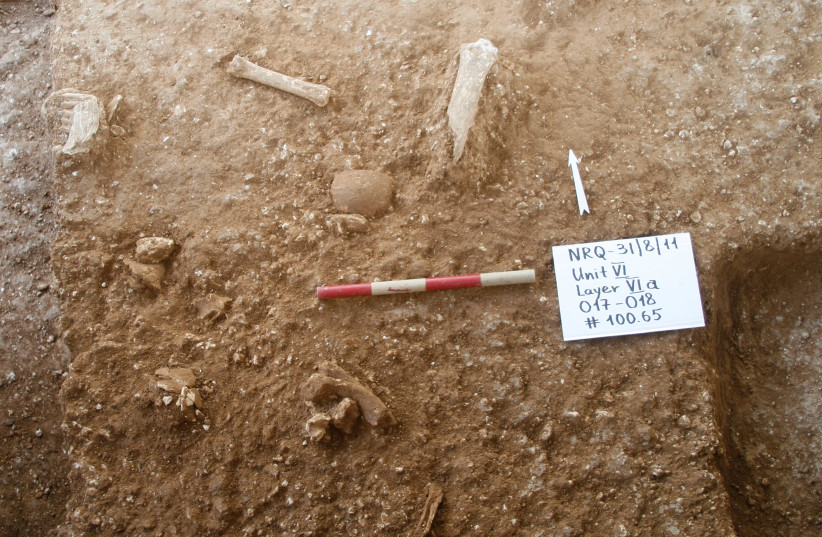
Skull found at the site among other items at Nesher Ramla.
(photo credit: DR. YOSSI ZAIDNER)
Hebrew U and Tel Aviv University researchers found remains of a new type of ‘Homo’ who lived in the region some 130,000 years ago.
A new type of early human previously not known to scientists has been discovered in Israel, Tel Aviv University and Hebrew University researchers announced Thursday as their extraordinary findings appeared in the prestigious academic journal Science.
Researchers believe the new “Homo” species intermarried with Homo sapiens and was an ancestor of the Neanderthals.
Tens of thousands of years ago, the busy central region of what is now a densely populated and traffic-jammed part of Israel, was a landscape that very much resembled the African savanna. It featured rhinos, wild horses and cattle and other large animals that were perfect game for ancient hunter-gatherers.
The site of Nesher Ramla, a few kilometers from the modern-day city, was probably close to a water reservoir where early humans could hunt animals. Today, the dig site is filled with many animal bones, stone tools for making fire and butchering, and human bones, including skulls, TAU anthropologist Prof. Israel Hershkovitz said.
Read the rest of this article...
No comments:
Post a Comment
Note: Only a member of this blog may post a comment.